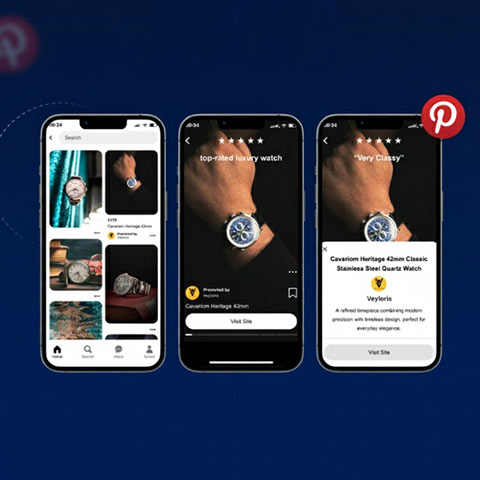Skip the Marketplace and Convert More Customers on Your Own Site


It’s a strange phenomenon: Recent research from Digiday and Yext suggests that consumers trust a brand’s website over third-party sites when it comes to finding answers to their questions and making purchases. But that’s not what their behavior reflects. As it turns out, a staggering 76% of people begin their digital product search on Amazon or a search engine like Google.
So, where does the brand’s website actually come into play? And why is the customer journey so disjointed — and what can CPG/FMCG brands do about it?
The broken customer journey
Over the last year digital has, in some cases, been the only way customers can make purchases. As a result, diverse CPG/FMCG brands are seeing more online revenue: For example, about 20% of L’Oréal’s total revenue now comes from its own branded website or those of online retailers like Amazon or Walmart.
But because CPG/FMCG brands haven’t traditionally focused on converting consumers on-site, on most brands’ websites search information about products, ingredients and ways to purchase aren’t easy to find. In fact, many major companies completely fail to answer basic brand questions on their websites.
And what happens when customers look for information on a site and don’t find what they want? They leave: An estimated 68 percent of people would not return to a site that provided a poor search experience. Providing a wrong answer or no answer at all almost guarantees a customer will bounce back to a search engine — and that they’ll choose to start their journey there in the future, knowing that the brand’s website can’t give them what they want.
By providing a sub-par search experience on-site, too many brands are missing a major opportunity: They aren’t converting valuable customers at the rates they could be, and they’re conditioning customers to continue relying on search engines (even when the search engine experience itself isn’t all that good).
But there is a better way. By creating a truly modern search experience, brands have the ability to keep more customers on their site — boosting conversions, reducing bounce, and gleaning more data in the meantime.
The major advantages of modern search
A modern search experience is one that understands your customers’ intent and then gives them exactly they need — in a way that makes it easier for them to buy from you than to complete their journey through a third-party source. Here’s what you need from a practical standpoint:
- A visible, universal search bar. Make sure your users can search for everything from one search box (with prominent page placement)
- Search that understands natural language. Allow your customers to ask natural language, full-sentence questions — just like they do on Google.
- Search results that are complete, actionable answers. Give direct answers on your site and make it easy for searchers to convert.
How does this play out in reality? As an example, let’s say a customer wants to buy L’Oréal shampoo from their nearest retailer.
In the broken model we often see today, this journey might involve a non-linear path of Google searches, frustrating click-throughs to different drugstore websites, and then (hopefully, for L’Oréal) an eventual purchase. But what if, instead, L’Oréal’s website could 1. allow a customer to search for “L’Oréal total repair shampoo for curbside pickup near me” and 2. Deliver a direct answer about the closest store, complete with a click-to-purchase button? That would create a much better customer experience — and give L’Oréal the benefit of better customer insights throughout the entire journey.
Investing in your site experience like this pays off. Yext research* shows that when some of our early customers leveraged Answers to bring a Google-like search experience to their own website, they saw meaningful results, including fewer site exits, with a bounce rate averaging 37% less than visits without site search.
An added bonus? When customers stay on your site longer, you gain more intel and data on what products and services they want, how they prefer to purchase (e.g. delivery or curbside pickup), and other new, sometimes surprising questions they have about the business. This data then allows your team to build a more direct feedback loop — informing important future business decisions from the custom content you develop to the type products you invest in the most.
*Yext research on early Answers customers, 2020
Want more like this?
Want more like this?
Insight delivered to your inbox
Keep up to date with our free email. Hand picked whitepapers and posts from our blog, as well as exclusive videos and webinar invitations keep our Users one step ahead.
By clicking 'SIGN UP', you agree to our Terms of Use and Privacy Policy


By clicking 'SIGN UP', you agree to our Terms of Use and Privacy Policy
Other content you may be interested in
Categories
Categories
Categories
Categories
Categories

Want more like this?


Want more like this?
Insight delivered to your inbox
Keep up to date with our free email. Hand picked whitepapers and posts from our blog, as well as exclusive videos and webinar invitations keep our Users one step ahead.
By clicking 'SIGN UP', you agree to our Terms of Use and Privacy Policy







![[Quick-Start Guide] Facebook Catalogue Shopping Product Feed Ads [Quick-Start Guide] Facebook Catalogue Shopping Product Feed Ads](https://images.bizibl.com/sites/default/files/shoppingiq-facebook-ads.png)

